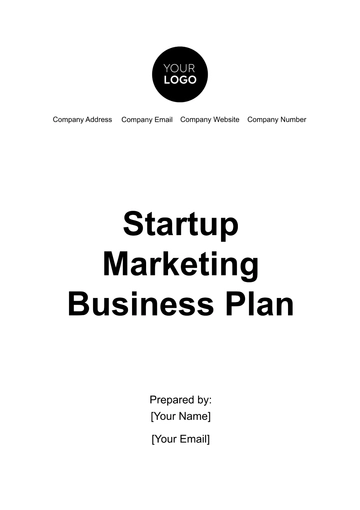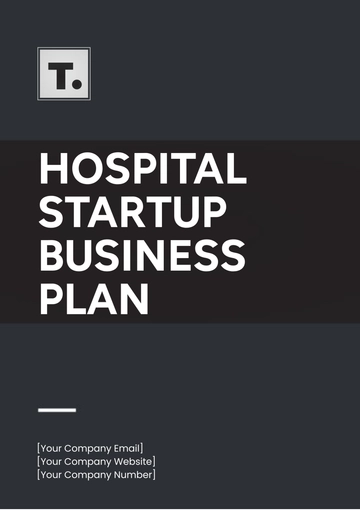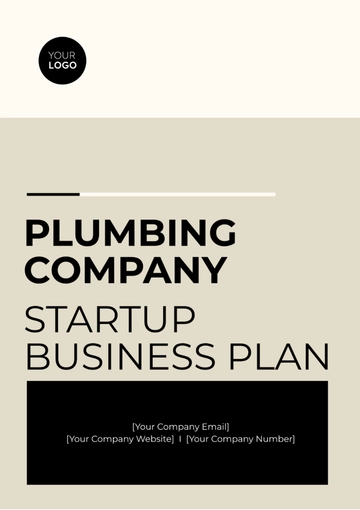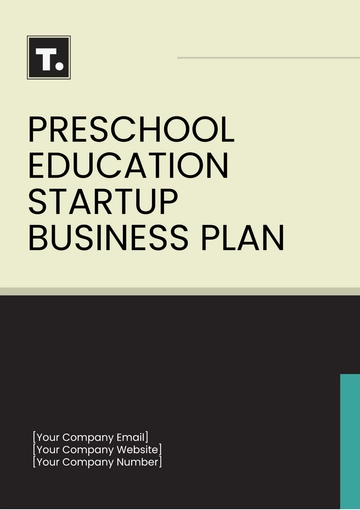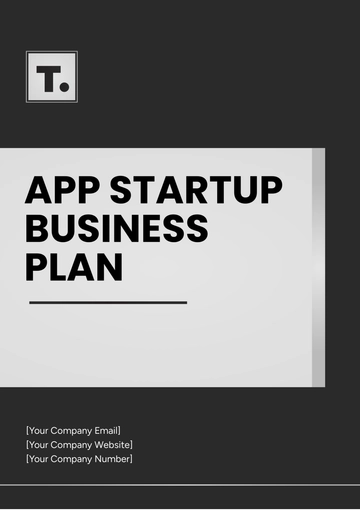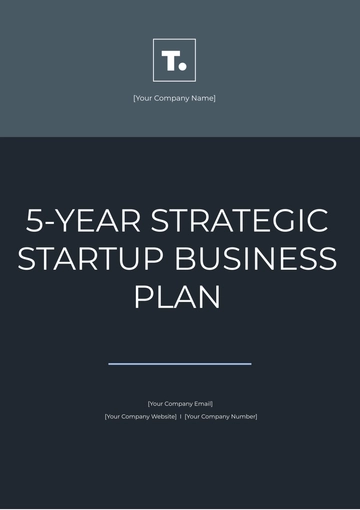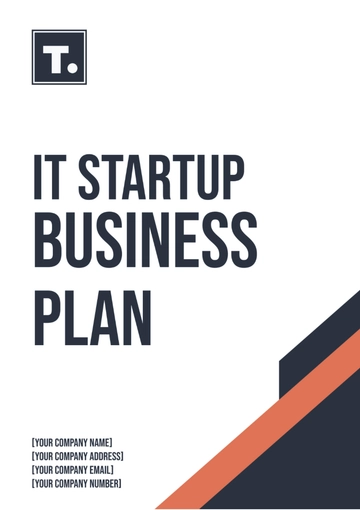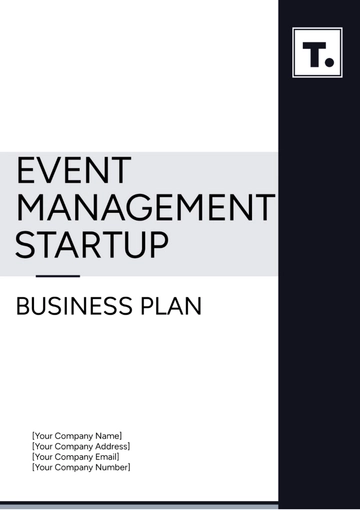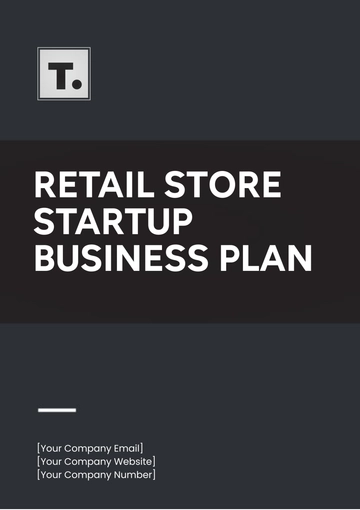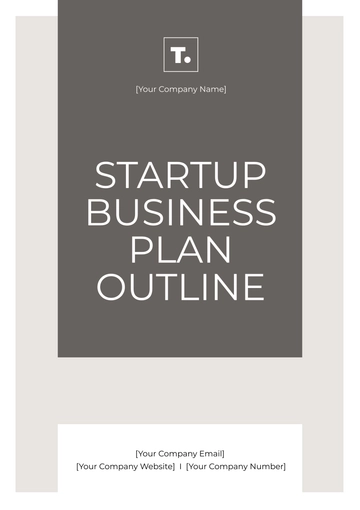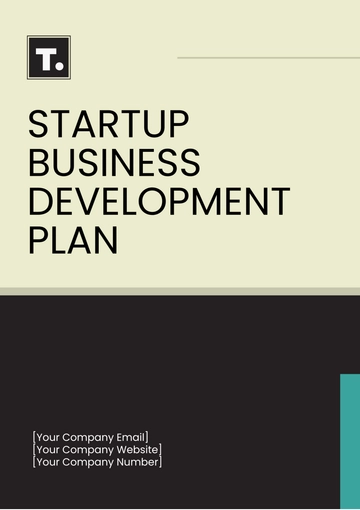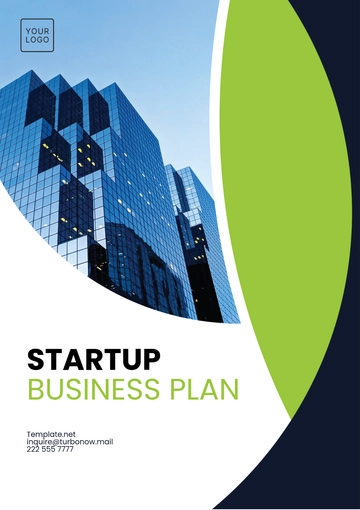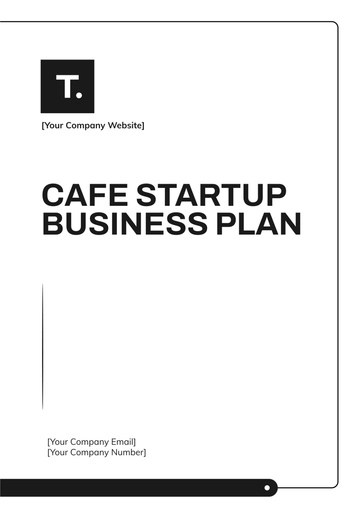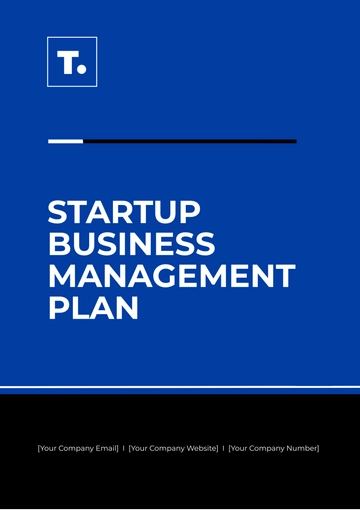Free Startup Business Expansion Plan

Executive Summary
[Your Company Name], a leading technology startup specializing in AI-driven solutions, presents this expansion plan aimed at solidifying its position in the market and capitalizing on emerging opportunities. With a robust foundation established through innovative products and strategic partnerships, the company is poised for strategic growth.
In response to market demand and industry trends, [Your Company Name] plans to expand its operations by introducing new product lines and entering untapped geographical markets. By leveraging its cutting-edge technology and talented workforce, the company aims to achieve a 30% increase in revenue within the next two years.
This comprehensive expansion plan outlines [Your Company Name]'s strategies for market penetration, product diversification, and operational optimization. Through targeted marketing initiatives, streamlined operations, and prudent financial management, [Your Company Name] anticipates significant growth and enhanced competitiveness in the artificial intelligence sector.
Introduction
[Your Company Name], founded in 2050, has quickly emerged as a trailblazer in the field of artificial intelligence. With a focus on pushing the boundaries of innovation and delivering value to clients, the company has garnered recognition for its groundbreaking solutions and customer-centric approach.
As the artificial intelligence industry continues to evolve, [Your Company Name] recognizes the need to adapt and expand its offerings to meet the changing needs of customers and capitalize on emerging opportunities. This expansion plan represents a strategic roadmap for propelling [Your Company Name] to new heights of success while maintaining its commitment to excellence and innovation.
Through diligent market research, stakeholder engagement, and strategic planning, [Your Company Name] is confident in its ability to execute this expansion plan effectively and achieve sustainable growth in the years to come.
Market Analysis
A. Market Overview
The artificial intelligence (AI) market is experiencing rapid growth, driven by increasing demand for automation, predictive analytics, and machine learning solutions across various industries. According to industry reports, the global AI market was valued at [$00 billion] in 2050 and is projected to reach [$00 billion] by 2030, with a compound annual growth rate (CAGR) of [00%] from 2050 to 2055. This growth is fueled by advancements in AI technology, growing investment in AI research and development, and the proliferation of data-driven decision-making.
B. Target Market Segment Analysis
[Your Company Name] primarily targets the following market segments:
Enterprise Solutions: The enterprise AI solutions market is estimated to be worth [$00 billion] by 2056. Key players in this segment include [Competitor 1] and [Competitor 2]. [Your Company Name]'s solutions focus on improving operational efficiency and decision-making processes for large enterprises, addressing key pain points such as data analysis and process automation.
Healthcare: The healthcare AI market is projected to reach [$00 billion] by 2056, with a CAGR of [00%]. [Your Company Name] provides AI-powered healthcare solutions that enhance patient care, optimize clinical workflows, and improve diagnostic accuracy. By leveraging machine learning algorithms, [Your Company Name] aims to revolutionize healthcare delivery and outcomes.
Retail: With the rise of e-commerce and personalized shopping experiences, the retail AI market is expected to surpass [$00 billion] by 2056. [Your Company Name] offers AI-driven retail solutions that enable retailers to analyze consumer behavior, optimize inventory management, and personalize marketing campaigns. By harnessing the power of AI, retailers can gain a competitive edge in the digital marketplace.
C. Competitor Analysis
[Your Company Name] faces competition from both established players and emerging startups in the AI market. Key competitors include:
[Competitor 1]: A leading provider of AI solutions with a strong presence in the enterprise and healthcare sectors. [Competitor 1] boasts a diverse portfolio of products and services, including predictive analytics and natural language processing.
[Competitor 2]: A well-known player in the retail AI market, [Competitor 2] specializes in customer segmentation and personalized marketing solutions. Despite facing challenges in scalability, [Competitor 2] maintains a loyal customer base and continues to innovate in the AI space.
[Competitor 3]: An up-and-coming startup disrupting the AI market with its innovative approach to machine learning and computer vision. [Competitor 3] has gained traction in niche markets and poses a potential threat to [Your Company Name]'s market share.
[Your Company Name] maintains a competitive edge through its proprietary algorithms, customizable solutions, and strong focus on customer satisfaction.
Expansion Objectives
[Your Company Name] has set the following objectives for its expansion plan:
Increase Revenue: [Your Company Name] aims to achieve a [00%] increase in annual revenue by expanding its product offerings and entering new markets.
Market Penetration: [Your Company Name] seeks to penetrate untapped market segments and increase its market share in existing segments by [00%] within the next two years.
Geographic Expansion: [Your Company Name] plans to enter the European and Asian markets to capitalize on emerging opportunities and diversify its revenue streams.
Product Diversification: [Your Company Name] will introduce three new product lines targeting specific market segments to cater to a broader range of customer needs.
These objectives align with [Your Company Name]'s long-term vision of becoming a global leader in AI-driven solutions while delivering value to customers and stakeholders.
Product/Service Offering
A. Current Offerings Overview
[Your Company Name] currently offers the following AI-driven solutions:
Predictive Analytics Platform: A robust platform that utilizes machine learning algorithms to analyze large datasets and generate actionable insights for businesses. This solution helps clients optimize decision-making processes, anticipate market trends, and improve operational efficiency.
Virtual Assistant Software: An AI-powered virtual assistant designed to enhance customer engagement and support services. This software leverages natural language processing (NLP) and speech recognition technologies to provide personalized assistance, automate tasks, and streamline customer interactions.
B. Proposed Expansion Offerings
In addition to its current offerings, [Your Company Name] plans to introduce the following new products/services:
AI-powered Chatbot: A customizable chatbot solution for businesses seeking to automate customer support, sales, and lead generation processes. This chatbot will utilize advanced AI algorithms to provide instant responses, gather customer feedback, and escalate inquiries to human agents when necessary.
Image Recognition System: An image recognition system capable of identifying objects, faces, and patterns in images and videos. This solution will find applications in security surveillance, retail analytics, and industrial automation, enabling clients to extract valuable insights from visual data.
C. Differentiation Strategy
[Your Company Name] differentiates itself in the market through:
Customization: [Your Company Name] offers highly customizable solutions tailored to each client's unique requirements, ensuring maximum value and flexibility.
Innovation: [Your Company Name] continuously invests in research and development to stay at the forefront of AI technology and deliver cutting-edge solutions that address evolving market needs.
Marketing Strategy
A. Branding Strategy
[Your Company Name] will focus on building a strong brand identity characterized by innovation, reliability, and customer-centricity. This will be achieved through consistent messaging, visually appealing branding materials, and engaging content across various marketing channels.
B. Promotional Activities
To generate awareness and interest in its expansion offerings, [Your Company Name] will undertake the following promotional activities:
Content Marketing: Publishing informative articles, blog posts, and case studies highlighting the benefits of AI technology and [Your Company Name]'s solutions.
Social Media Campaigns: Running targeted advertising campaigns on platforms like LinkedIn, Twitter, and Facebook to reach key decision-makers and influencers in the target markets.
C. Digital Marketing Plan
[Your Company Name] will employ a mix of search engine optimization (SEO), pay-per-click (PPC) advertising, and email marketing to drive traffic to its website, generate leads, and nurture customer relationships.
D. Distribution Channels
[Your Company Name] will distribute its products/services through a combination of direct sales, channel partnerships, and online marketplaces. This multi-channel approach will maximize reach and accessibility to potential customers across different industries and regions.
Operational Plan
A. Production/Service Delivery Plan
[Your Company Name] will streamline its production and service delivery processes to ensure efficiency and scalability. This includes:
Implementing agile project management methodologies to facilitate collaboration and adaptability.
Investing [$000,000] in automation tools and software to optimize repetitive tasks and reduce manual errors.
Establishing quality control measures, with an initial investment of [$000,000], to maintain high standards in product/service delivery.
Providing ongoing training and development opportunities for employees, with an allocated budget of [$000,000], to enhance skills and productivity.
B. Supply Chain Management
[Your Company Name] will optimize its supply chain to minimize costs and improve reliability. Key strategies include:
Establishing strategic partnerships with reliable suppliers, with an initial investment of [$000,000], to ensure timely delivery of raw materials and components.
Implementing inventory management software, with an investment of [$000,000], to track stock levels, forecast demand, and prevent stockouts.
Conducting regular performance reviews and audits, with an annual budget of [$00,000], to identify areas for improvement and mitigate risks.
C. Quality Control Measures
[Your Company Name] is committed to delivering products and services of the highest quality. Quality control measures include:
Conducting thorough testing and validation procedures, with an initial investment of [$000,000], to ensure that products meet or exceed customer expectations.
Implementing feedback mechanisms, with an allocated budget of [$000,000], to gather input from customers and stakeholders and incorporate improvements.
Adhering to industry standards and regulations, with an annual compliance budget of [$00,000], to uphold compliance and accountability.
Financial Plan
A. Revenue Projections
Based on market analysis and expansion objectives, [Your Company Name] forecasts the following revenue projections:
Year 1: | [$0 million] |
Year 2: | [$0 million] |
Year 3: | [$0 million] |
These projections are based on conservative estimates of market penetration, pricing strategy, and sales volume.
B. Cost Structure Analysis
[Your Company Name] anticipates the following cost structure for its expansion plan:
Research and Development: | [$0 million] |
Marketing and Advertising: | [$0 million] |
Operations and Administration: | [$0 million] |
Sales and Distribution: | [$0 million] |
Total Estimated Costs: | [$0 million] |
These costs include both fixed and variable expenses associated with product development, marketing campaigns, operational overhead, and sales efforts.
C. Break-even Analysis
[Your Company Name] expects to achieve breakeven within 18 months of launching its expansion plan. The breakeven analysis indicates that [Your Company Name] needs to generate [$0 million] in annual revenue to cover its operating expenses and achieve profitability.
D. Funding Requirements
To support its expansion initiatives, [Your Company Name] seeks funding in the amount of [$0 million]. This funding will be allocated towards:
Product development and innovation: | [$0 million] |
Marketing and sales expansion: | [$0 million] |
Operational improvements: | [$0 million] |
[Your Company Name] is open to exploring various funding options, including venture capital investment, loans, and strategic partnerships, to fuel its growth trajectory.
Risk Management
A. Identification of Risks
[Your Company Name] recognizes the following potential risks associated with its expansion plan:
Market Volatility: Fluctuations in market conditions or changes in customer preferences could impact demand for [Your Company Name]'s products/services.
Technological Disruption: Rapid advancements in technology may render [Your Company Name]'s solutions obsolete or less competitive over time.
Regulatory Compliance: Changes in regulations or compliance requirements could increase operational costs and pose legal risks for [Your Company Name].
Supply Chain Disruptions: Disruptions in the supply chain, such as shortages of raw materials or disruptions in logistics, could impact production and delivery schedules.
Talent Acquisition and Retention: Difficulty in attracting and retaining skilled employees could hinder [Your Company Name]'s ability to execute its expansion plan effectively.
B. Mitigation Strategies
To mitigate these risks, [Your Company Name] will implement the following strategies:
Diversification of Revenue Streams: [Your Company Name] will diversify its product offerings and target markets to reduce reliance on any single source of revenue.
Continuous Innovation: [Your Company Name] will invest in research and development to stay ahead of technological trends and maintain a competitive edge in the market.
Regulatory Compliance Monitoring: [Your Company Name] will closely monitor changes in regulations and proactively adjust its operations to ensure compliance with applicable laws and standards.
Supplier Relationship Management: [Your Company Name] will establish strong relationships with key suppliers and maintain alternative sourcing options to mitigate supply chain risks.
Talent Development Programs: [Your Company Name] will implement employee training and development programs to enhance skills and foster a culture of innovation and retention.
C. Contingency Planning
In the event of unforeseen challenges or disruptions, [Your Company Name] will activate contingency plans to minimize impact and ensure business continuity. These plans include:
Maintaining a financial reserve to cover unexpected expenses or revenue shortfalls.
Establishing alternative production and distribution channels to mitigate supply chain disruptions.
Implementing cross-training programs to ensure redundancy in critical roles and functions.
Engaging with legal and regulatory experts to address compliance issues and mitigate legal risks promptly.
Implementation Timeline
[Your Company Name] has developed the following timeline for the implementation of its expansion plan:
Month 1-3: | Conduct market research and analysis, finalize product/service offerings, and develop marketing strategies. |
Month 4-6: | Begin product/service development, establish partnerships, and initiate recruitment for key positions. |
Month 7-9: | Launch marketing campaigns, complete product/service development, and commence sales activities. |
Month 10-12: | Expand sales efforts, enter new markets, and monitor performance metrics. |
Year 2-3: | Scale operations, evaluate expansion outcomes, and make adjustments as needed to ensure continued growth and success. |
- 100% Customizable, free editor
- Access 1 Million+ Templates, photo’s & graphics
- Download or share as a template
- Click and replace photos, graphics, text, backgrounds
- Resize, crop, AI write & more
- Access advanced editor
Explore the Startup Business Expansion Plan Template on Template.net, your trusted source for professional resources. This versatile template is fully editable and customizable, allowing startups to tailor their expansion strategies to specific needs. With our intuitive Ai Editor Tool, effortlessly modify the plan to align with your growth objectives. Propel your business forward with a well-crafted expansion blueprint.
You may also like
- One Page Business Plan
- Coffee Shop Business Plan
- Restaurant Business Plan
- Food Business Plan
- Real Estate Business Plan
- Executive Summary Business Plan
- Cover Page Business Plan
- Nonprofit Business Plan
- Daycare Business Plan
- Construction Business Plan
- Startup Business Plan
- Medical Business Plan
- Bakery Business Plan
- Service Plan
- Hotel Business Plan
- Catering Business Plan
- School Business Plan
- Healthcare Business Plan
- Transportation Plan
- Sports Plan
- Car Wash Business Plan
- Salon Business Plan
- Clothing Business Plan
- Farming Business Plan
- Boutique Plan








